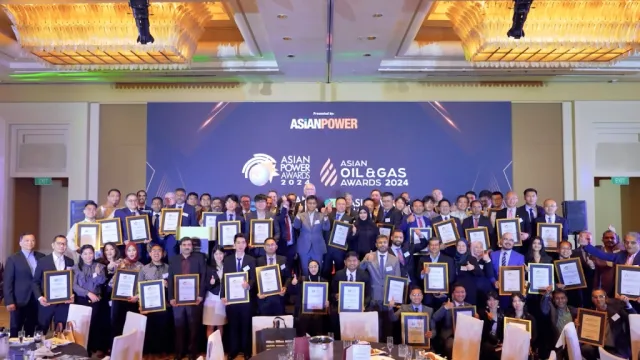Breaking free from the carbon shackles
By Jami HossainGrid Collapse & Coalgate should pave the way for Renewable Energy deployment.
Electricity has always been at the forefront of the economic, political and developmental issues of the country. However, in recent times it arrived on the center-stage with a big bang as never before and for some days occupied every citizen’s mind in this country.
The grid collapse occurrence on two consecutive days at the end of July 2012 impacting daily lives of all citizens in 22 states was clearly seen as more than just a grid collapse. It signified the collapse of policies that have been pursued in the electricity sector so far.
Policies, that could not bring about sufficient capacity to meet growing electricity demand; policies, that were in any case skewed towards creation of large centralized coal based power plants and very limited distributed generation; and, policies that resulted in inadequate investments in transmission systems.
It is very obvious that till today, the political and policy thrust has been “coal, coal & more coal”. Coal was always unclean, but now interestingly, the handling and dealings of this black substance have become murkier even at the political level.
Allocation of 142 coal blocks and 57 coal fields to private companies, which according to Comptroller and Auditor General of India (CAG) amounts to favouring these companies by a staggering amount of Rs.1.86 lac crores. To the public in general, this large amount – is like a large hideous creature that has emerged from nowhere.
Those who have been rather uncomfortably positioned due to this revelation may be countering the allegations. However, a doubt has been created in the minds of the people, which cannot be erased. An image, a shadow of a large hideous creature - a “Yeti” can be seen or visualized.
This “Yeti,” which could only have been clearly visible to an agency such as CAG, amounts to a massive indirect subsidy to coal based private power generation and thus skews us the development of entire power sector. If this ‘favour’ or ‘indirect subsidy’ was not there, what would be the cost of electricity generation to the nation and how would it compare with electricity generation from renewable energy.
We raise this issue here because in the electricity sector, the policy makers, planning bodies and the regulators have always leaned on the economic rationale in order to justify reliance on coal based generation. However, now it seems they have been leaning on a rationale that doesn’t hold.
It is altogether another matter that the ongoing “Coalgate” issue may have serious political fallouts and may get mixed up with other political and social issues confronting the Indian society and may reach such proportions that flows into the mainstream politics, however, here we are not concerned with such matters.
Returning to the issue on hand i.e., the Indian electricity sector, part of the problem lies in not exploring huge solar, wind and biomass energy potential that this country has been endowed with. A national grid powered by innumerable renewable energy based distributed generators across the country would never have collapsed as it did on the last day of July 2012. An assessment made by this author and further revalidated by Lawrence Berkley National Laboratory (LBNL) has assessed the potential for wind energy utilization in India to be of the order of 2000-4000 GW. Potential for solar energy or biomass energy has not been assessed. There is vast potential for renewable energies and if efforts had been made to assess and harness such energies, there would have neither been the monumental grid collapse nor the ongoing “Coalgate” mess. This potential includes nearly 1000 GW of
offshore potential for windfarms.
The peninsular India is wind swept and holds enormous potential for the utilization of wind energy. The coastal states like Gujarat, Maharashtra, Goa, Karnataka, Kerala, Tamil Nadu, Andhra Pradesh and Orissa are endowed with vast offshore as well as onshore wind potential, which could be around 2600 GW. The only other states that have significant wind potential are Rajasthan and Madhya Pradesh.
The 1000 GW offshore potential mentioned above is based on an assessment over a 40 km strip around the 6400 km long shores of India. Only those areas, where the depth is within 40 m have been considered. A 40 m depth will enable setting up of foundations under the sea. However, there are now technologies that could mature within a few years wherein one can have floating windfarms. In that case, the potential would be significantly higher.
The states that form peninsular India, account for nearly 40% of land area of the country as well as nearly 40% of the country’s population. These states include some of the highly industrialized states and metropolitan cities like Mumbai, Chennai, Hyderabad and Bangalore. The total energy requirements of these states were of the order of 500 billion units in 2009 -10, about 55% of the entire countries electrical energy requirements in that year. Total generating capacity in these states was 17.46 GW (hydro) and 39.8 GW (thermal) in 2009-2010 and these states also account for 56% of the national peak load demand at 67.7 GW. Any kind of offshore wind energy projects that come up in future will feed into these coastal states. Monthly electrical energy requirements are more or less uniformly spread across all the months.
The entire region is subject to high wind speeds during summer and the south-west monsoons. Wind speeds generally pick-up in April, gain full force in May and subside by September. A windfarm would typically generate 70% of the total annual generation in the months of April to September. Some parts of Tamil Nadu and to some extent Andhra Pradesh and Karnataka also get some winds from the North East Monsoons. This implies that a windfarm that would typically operate at a Plant Load Factor (PLF) of 25% on an annual basis would be operating at a 40% higher PLF of 35% in the six months April to September. This means that we need nearly 165 GW windfarm capacities with annual PLF of 25% and peak season PLF of 35% to meet all the electrical energy requirements of the coastal states in the six windy months.
There are a plethora of renewable energy technologies and technological combinations and configurations that should be explored. We need to evolve strategies to combine wind energy with solar generation, load management, advanced technologies, storage systems, transmission strengthening and transmission linkages of adequate capacity to deficit areas as well as smart grid strategies. This should be the focus instead of the obsession with coal.
Not all electrical loads should be met by grid. Different kinds of loads should be segregated so that one can examine the possibility of meeting these loads at the supply side using renewable energy. For example, all lighting loads can generally be met by solar power. All agricultural loads that account for nearly 25% of the national electricity consumption can be met entirely by Solar, Wind and Biomass based generation in a decentralized and off-grid manner. The pumping loads in the agricultural sector can be met by wind or solar operated pumps. Most of the household electricity loads (other than air conditioning) can be met by off-grid or grid connected solar and wind technologies. All water heating loads can be met by solar water heating systems. New technologies may enable solar powered refrigeration and air conditioning.
Every other middle class household in India uses inverters with battery banks that get charged when the grid is there and supply electricity when there is no grid. This is also happening in the commercial and services segments. A greater focus on batteries and inverters may result in improved efficiencies and scaled up models and approaches. Even the grid operators and the National and State Load Dispatch Center should start looking at large-scale storage systems. Unfortunately, there is no mention of electricity storage systems in the Electricity Act and nobody knows how to treat an entity that stores electricity using renewable energy and supplies to the grid at peak load times. Regulations could be framed for such entities deploying such technologies.
Even vehicles, autos and Rickshaws can be battery driven, which are charged by renewable energy. This is being examined on a large scale in Europe. A large fleet of battery driven vehicles with smart electronics can provide a very large storage medium that can enable thousands of gigwatts of renewable energy generation with the grid. Same is the case for inverter-battery systems that are so common across the country.
What we have described above, is only one side of the coin. Imagine the employment and the fillip to the economy if such options were pursued, which is the other side of the coin and this employment will not happen in cities but in remote far-off villages. According to Mahatma Gandhi, “Soul of India lives in its villages.” As per the 2011 census 68.84% (833 million) Indians live in villages and that is where we need this action. High time to break free
from the carbon shackles!




















 Advertise
Advertise








